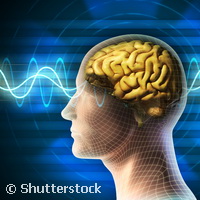Robotic arm controlled by the power of the mind
A robotic arm developed by a team of European researchers goes some way towards giving severely paralysed people some independence. The arm can be controlled intuitively, meaning the person just has to think about using their arm for it to move. Both able-bodied and disabled individuals were able to grab objects from a table in tests at the end of the project - a level of movement previously only achieved using invasive brain computer interfaces (BCIs). The results of EU-funded project Brain2Robot ('A Robotic-Arm Orthosis Controlled by Electroencephalography and Gaze for Locked-In Paralytics') are extremely promising, and involve very little risk for disabled persons as the technology is non-invasive. The project, led by Munich-based Fraunhofer-Gesellschaft, opened up a new line of research in robotics and BCI. The results also point the way to new research into basic questions about motor physiology, brain function and organisation. The research blended human motor physiology with engineering to create a BCI guided by eye and head movements as well as a conventional electroencephalogram (EEG) - the type used in routine clinical procedures to measure electrical activity along the scalp. Electrodes pick up the brain's signals, which are then amplified and transmitted to a computer. The team made advances here, developing dry contact electrodes that can be applied within minutes and used repeatedly - a much easier process than for standard EEG recording equipment, which needs liquid gel to be expertly applied to the contacts. Together, the Brain2Robot components are able to detect changes in brain activity triggered purely by someone thinking about a particular behaviour. The components can distinguish between neural impulses corresponding to the idea of moving the right or left hand. The neural signal patterns are then converted into control commands for the computer. The technology also has other potential uses, such as for video games and car safety systems, where it could be used to monitor the driver or provide driver assistance. BRAIN2ROBOT received EUR 1.3 million in EU funding through a Marie Curie grant for excellent teams. The project ended in December 2008. The next steps will be to simplify the basic components and user interface, and to reduce production costs.For more information, please visit: Project factsheet Fraunhofer-Gesellschaft http://www.fraunhofer.de/en.html
Countries
Germany



